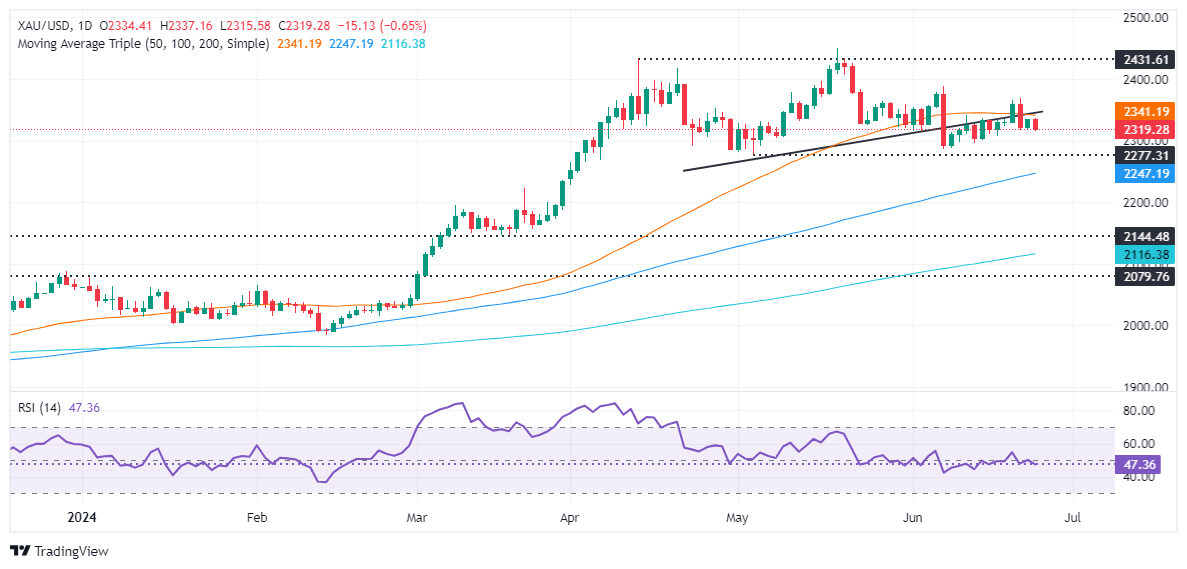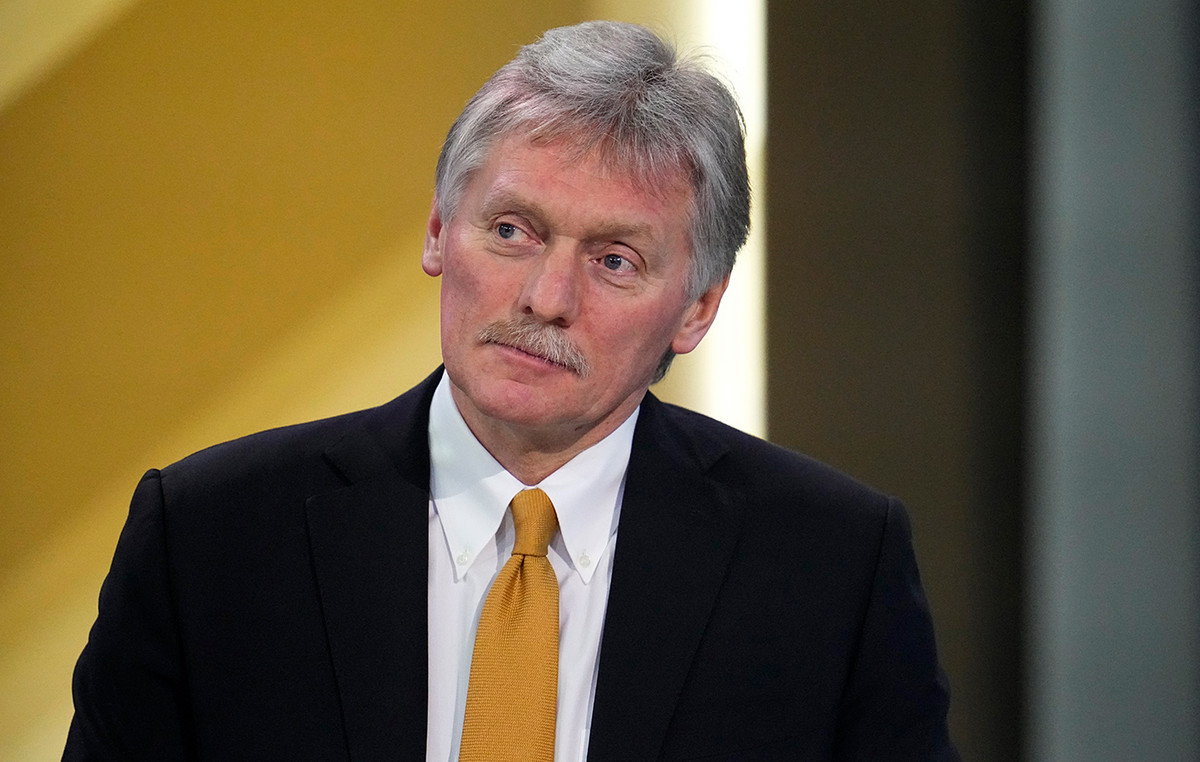- Gold falls 0.59%, pressured by the recovery of the US Dollar and the rise in Treasury yields.
- The gold metal was pressured by Fed Governor Michelle Bowman’s hawkish comments.
- Fed Governor Lisa Cook is neutral, predicting a sharp drop in inflation next year.
- US Conference Board indicates declining consumer optimism, with lower expectations of future income and business conditions
The price of Gold fell after hitting a weekly high of $2,334 and fell as the dollar rallied, supported by a minimal rise in US Treasury yields, driven by Fed Governor’s hawkish comments Federal (Fed), Michelle Bowman. XAU/USD is trading at $2,319, down 0.59%.
Bowman emphasized that monetary policy should remain stable for “some time” and would probably be enough to reduce inflation. She ruled out rate cuts this year and stated that she is willing to raise rates “if progress on inflation stalls or even reverses.”
Recently, his colleague Lisa Cook took a more neutral stance, saying inflation would likely fall “drastically” next year, adding that policy easing would be necessary to keep the Fed’s dual mandate more balanced.
Turning to economic data, the US Conference Board revealed that consumers are becoming less optimistic. According to the survey, consumers’ view of the current situation improved; however, “their expectations for future income and business conditions weakened, affecting the overall Expectations Index.”
Meanwhile, traders are awaiting the release of the personal consumption expenditures (PCE) price index, the Fed’s preferred measure of inflation. If the data comes in below the previous reading and estimates, it will rekindle hopes for rate cuts next year.
Market drivers and daily market movements: Gold price extends losses due to US dollar strength
- The US Dollar Index (DXY), which tracks the value of the US currency against a basket of six other currencies, gained 0.13% to 105.61. Meanwhile, the yield on the 10-year US Treasury note was flat at 4.242%.
- On Monday, San Francisco Fed President Mary Daly leaned toward a dovish stance, saying, “At this point, inflation is not the only risk we face,” raising concerns about the labor market.
- The Conference Board (CB) revealed that consumer confidence in June was 100.4, exceeding expectations, but fell short of May’s increase of 101.3.
- Core PCE is expected to fall from 2.7% to 2.6% in annual readings. The core is forecast to drop from 2.8% to 2.6%.
- According to the CME’s FedWatch tool, the odds of a 25 basis point Fed rate cut are 59.5%, up from 61.1% last Monday.
- The December 2024 federal funds rate futures contract implies the Fed will ease policy by just 36 basis points (bps) by the end of the year.
Technical Analysis: Gold price pulls back after testing the neck line of the head-and-shoulder pattern near $2,330
Gold price remains biased lower after forming a ‘bearish engulfing’ chart pattern on Friday. This further validates the shoulder-head-shoulder chart pattern, meaning further decline is expected for the non-performing metal.
The next support for XAU/USD would be $2,300. Once cleared, XAU/USD would fall to $2,277, the May 3 low, followed by the March 21 high of $2,222. More losses lie below, with sellers targeting the head-shoulder chart pattern target of $2,170 to $2,160.
Conversely, if Gold reclaims $2,350, that will expose additional key resistance levels such as the June 7 cycle high of $2,387, before challenging the $2,400 figure.
The Fed
The monetary policy of the United States is directed by the Federal Reserve (Fed). The Fed has two mandates: achieving price stability and promoting full employment. Your main tool to achieve these objectives is to adjust interest rates. When prices rise too quickly and inflation exceeds the Federal Reserve’s 2% target, it raises interest rates, raising borrowing costs throughout the economy. This translates into a strengthening of the US Dollar (USD), as it makes the United States a more attractive place for international investors to place their money. When inflation falls below 2% or the unemployment rate is too high, the Federal Reserve can lower interest rates to encourage borrowing, which weighs on the greenback.
The Federal Reserve (Fed) holds eight meetings a year, in which the Federal Open Market Committee (FOMC) evaluates the economic situation and makes monetary policy decisions. The FOMC is made up of twelve Federal Reserve officials: the seven members of the Board of Governors, the president of the Federal Reserve Bank of New York, and four of the eleven presidents of the regional Reserve banks, who serve for one year on a rotating basis.
In extreme situations, the Federal Reserve can resort to a policy called Quantitative Easing (QE). QE is the process by which the Fed substantially increases the flow of credit into a clogged financial system. It is a non-standard policy measure used during crises or when inflation is extremely low. It was the Fed’s weapon of choice during the Great Financial Crisis of 2008. It involves the Fed printing more dollars and using them to buy high-quality bonds from financial institutions. QE usually weakens the US dollar.
Quantitative tightening (QT) is the reverse process of QE, whereby the Federal Reserve stops buying bonds from financial institutions and does not reinvest the capital of the maturing bonds it has in its portfolio to buy new bonds. It is usually positive for the value of the US Dollar.
Source: Fx Street
I am Joshua Winder, a senior-level journalist and editor at World Stock Market. I specialize in covering news related to the stock market and economic trends. With more than 8 years of experience in this field, I have become an expert in financial reporting.








